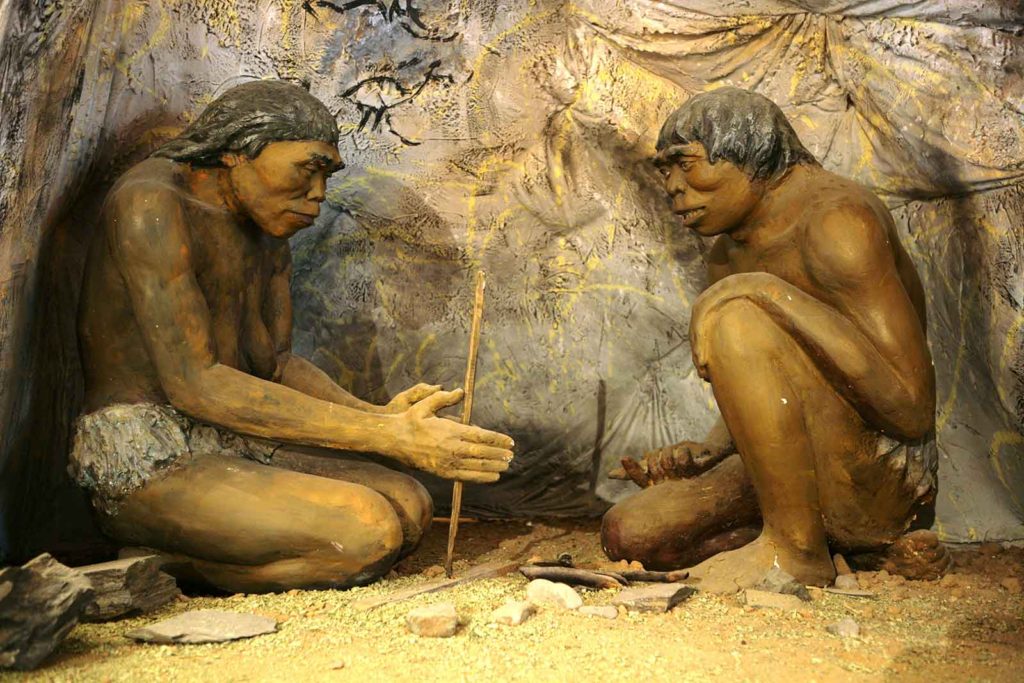Table of Contents
Stone Age: Fiction
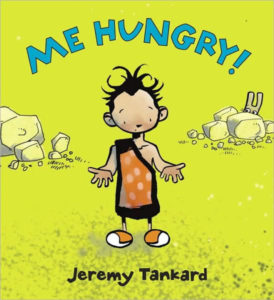 |
In Jeremy Tankard’s Me Hungry! (Candlewick, 2008), a small Stone-Age boy’s plea of “Me hungry!” only gets a “Me busy!” from his preoccupied parents – so off he goes hunting on his own. He deals with a rabbit, a porcupine, and a tiger – until he gets some help from an also-hungry woolly mammoth. For ages 4-7. |
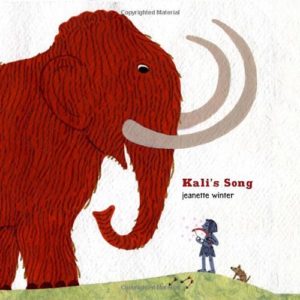 |
In Jeanette Winter’s Kali’s Song (Schwartz & Wade, 2012), Stone-Age Kali must learn to hunt – but instead discovers that he can make music by plucking the string of his bow. A charmer for ages 4-7. |
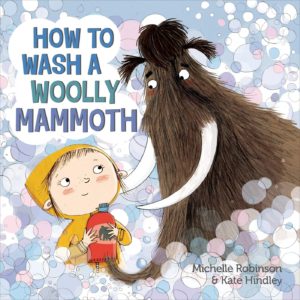 |
Michelle Robinson’s How to Wash a Woolly Mammoth (Henry Holt and Company, 2014) has next to nothing to say about prehistory, but it’s a delightful bathtime picture book. With a woolly mammoth. For ages 4-8. |
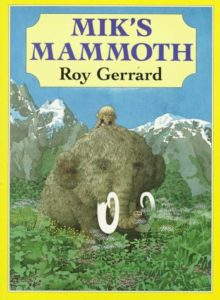 |
In Roy Gerrard’s Mik’s Mammoth (Sunburst, 1992), Mik, the title character, though small and timid, is also imaginative and smart; when his tribe inadvertently leaves him behind, he adopts a baby mammoth and finds a cozy cave in which to shelter for the winter. Eventually, he learns to plant a garden, fish, and paint pictures on his cave walls; and finally he and his mammoth save his erstwhile tribe from an attack by fierce “hairy men,” for which he is made chief. A simple rhyming text for ages 4-8. |
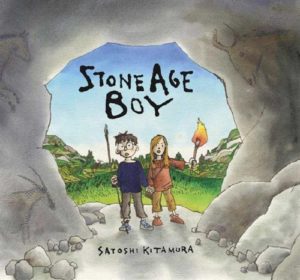 |
In Satoshi Kitamura’s Stone Age Boy (Walker, 2008), a young boy out on a walk trips and falls into the Stone Age, where he meets a girl his own age and learns about her tribe’s way of life. After another fall, he returns to his own time, where his family insists it was all a dream – but he’s so fascinated by the experience that he grows up to be an archaeologist. For ages 6-8. |
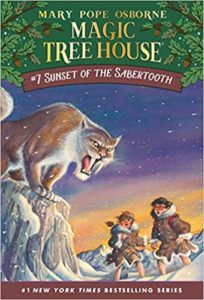 |
One of Mary Pope Osborne’s Magic Tree House series, in Sunset of the Sabertooth (Random House, 1996), Jack and Annie are sent back to the time of the cave people and the woolly mammoths. Unfortunately they arrive wearing nothing but bathing suits. For ages 6-9. Also see Sabertooths and the Ice Age (Random House, 2005), the fact-filled nonfiction companion to the book. |
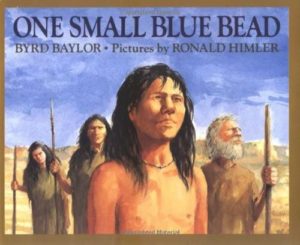 |
Byrd Baylor’s lyrical One Small Blue Bead (Atheneum, 1992) centers around a Stone-Age tribe that believes they must be the only people in the world. One old man, however, isn’t so sure: “There must be caves just like our own/Somewhere/And other axes made of stone/Somewhere/And other men like me.” Eventually he sets off on a quest, returning with a strange boy from a different tribe and a blue bead, which last becomes a hopeful symbol of friendship and brotherhood. For ages 7-10. |
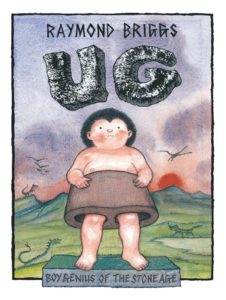 |
In Raymond Briggs’s Ug: Boy Genius of the Stone Age (Knopf, 2002), the Stone Age is all stone. Ug and his parents sleep in stone beds under stone blankets; and Ug, to his great discomfort, is even made to wear stone pants. As boy genius, however, Ug has ideas ahead of his time. (“Why can’t trousers be made of something else? Something softer?”) Eventually he invents the wheel and cooking, only to have both rejected by his parents, who don’t know how to cope with him. (“He’ll end up painting animals on the walls!” his mother cries in despair.) Which, in a final scene, Ug, now a grown man, does. The book, drawn in blocky panel cartoons, is funny, clever, and ultimately poignant; what looks like a joke soon becomes a parable about the difficulties inherent in trying to change the world for the better. For ages 7-11. |
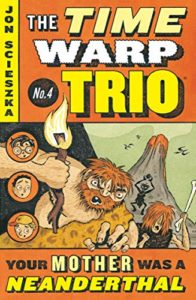 |
In Jon Scieszka’s Your Mother Was a Neanderthal (Puffin, 2004) Joe, Sam, and Fred – the zany “Time Warp Trio” – by means of a magic book end up in the Stone Age. (It’s not history, but it’s fun, which is what leads to history.) For ages 7-11. |
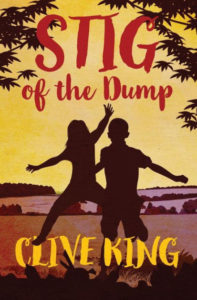 |
In Clive King’s Stig of the Dump (Open Road Media, 2016), Barney falls into a chalk pit and meets Stig, a displaced cave boy dressed in a rabbit skin and living in an improvised den made of trash. Many adventures follow. A classic for ages 8-11. See these Teaching Ideas and Resources for Stig of the Dump. |
|
Also see the Stig of the Dump miniseries (2002). |
|
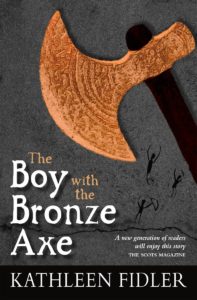 |
In Kathleen Fidler’s The Boy with the Bronze Axe (Kelpies, 2012) two Stone-Age kids from the Orkney village of Skara Brae are trapped by the tide – and then rescued by a strange boy in a strange boat, armed with an axe like nothing they’ve ever seen before. Soon their village is struggling to cope with new technology. For ages 8-12. |
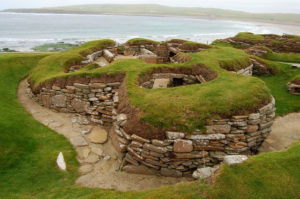 |
Learn about the village of Skara Brae – which was abandoned around 2500 BCE. |
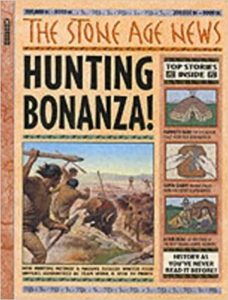 |
Fiona MacDonald’s The Stone Age News (Candlewick Press, 2001) is a quirky history of the period in newspaper format, right down to the classified ads, fashion tips, and cooking columns. Features include “Ten Uses for a Mammoth,” “Bjorn’s Battle Tips,” and – for hopeful homeowners – “A Cave of My Own.” For ages 8-12. |
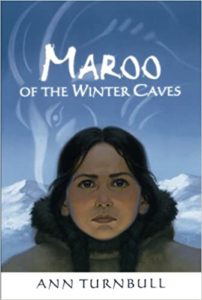 |
Ann Turnbull’s Maroo of the Winter Caves (Clarion Books, 2004) is a Stone Age survival story. Maroo’s family is stranded by a blizzard and she and her younger brother, Otak, must cross the treacherous White Mountain to get help. For ages 8-12. |
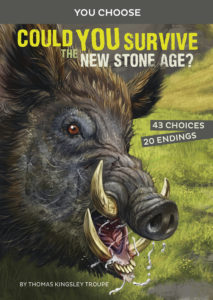 |
By Thomas Kingsley Troupe, Could You Survive the New Stone Age? (Capstone, 2020) is an interactive prehistoric adventure – see if you could survive if you suddenly traveled back in time to the Stone Age. Twenty different endings. For ages 8-12. |
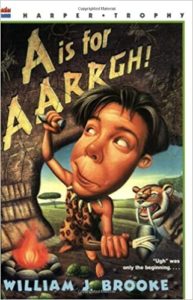 |
William J. Brooke’s A is for AARRGH! (HarperTrophy, 2000) is a humorous – but ultimately serious – novel about the acquisition of language. The rest of the tribe points and grunts, but young Mog uses mouth noises to name and identify objects. Once the tribe picks up on that, Mog goes on to invent adjectives, adverbs, verbs, and past and future tenses, and eventually even the crucial word “if,” which allows an equally creative young girl to invent storytelling. Language has its downside too; when Mog and the girl leave the tribe, Drog – a lazy, but cunning, lug – comes up with words that lead to bureaucracy, money, ownership, and debt. Luckily Mog returns in time to save the day. For ages 9-12. |
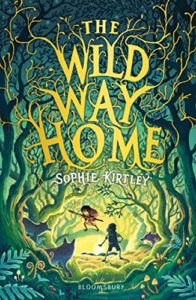 |
In Sophie Kirtley’s The Wild Way Home (Bloomsbury, 2020), Charlie’s new baby brother is born with a life-threatening heart condition – and Charlie, devastated, flees to the neighboring forest. There he (or she; Charlie’s gender isn’t made clear) stumbles into the world of the Stone Age, meets a prehistoric boy who is looking for his baby sister – and the two form a bond over issues of family, courage, and survival. For ages 9-12. |
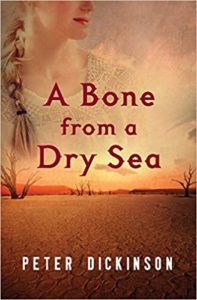 |
Peter Dickinson’s A Bone from a Dry Sea (Open Road Media, 2015) juxtaposes the story of a bright young female hominid named Li, growing up in Africa two million years ago, with the story of teenaged Vinny, spending the summer with her archaeologist father, who is excavating the site where Li and her people once lived. For ages 12 and up. Also by Dickinson, see The Kin (Puffin, 2003), set in a tribal society of 200,000 years ago, in which a group of children are cut off from their “Kin” – the Moonhawks – and must survive on their own in a hostile world full of volcanoes, deserts, giant lions, and evil shamans. For ages 10 and up. |
